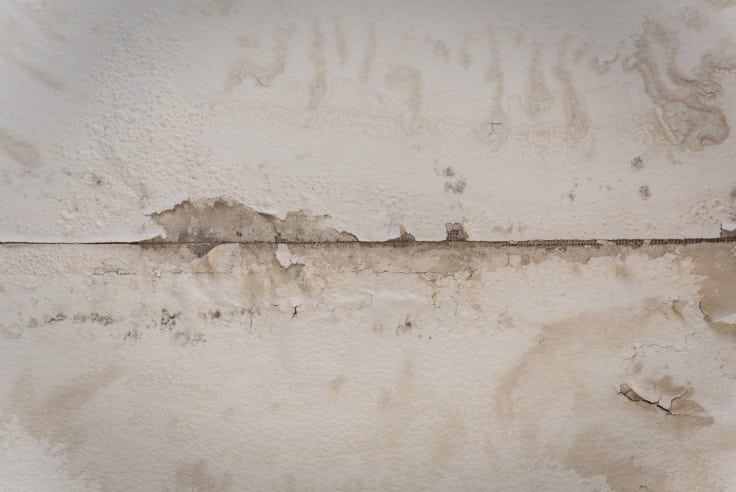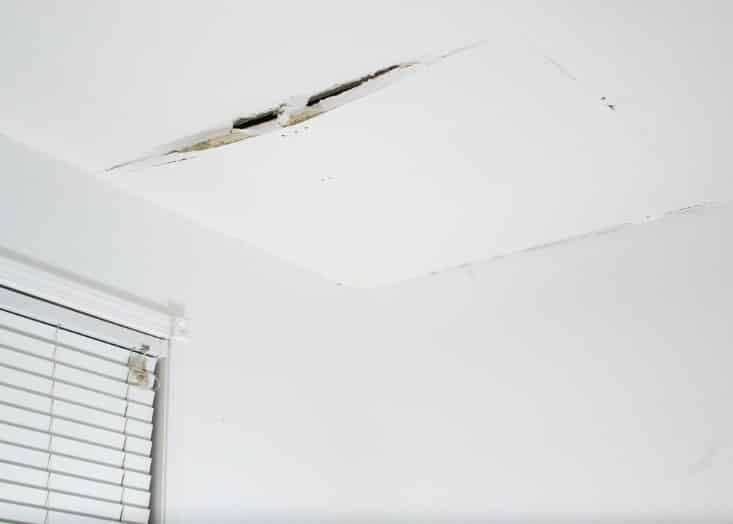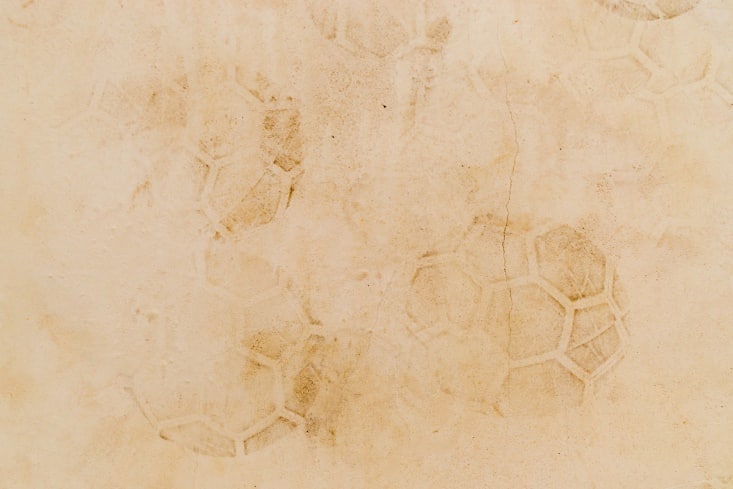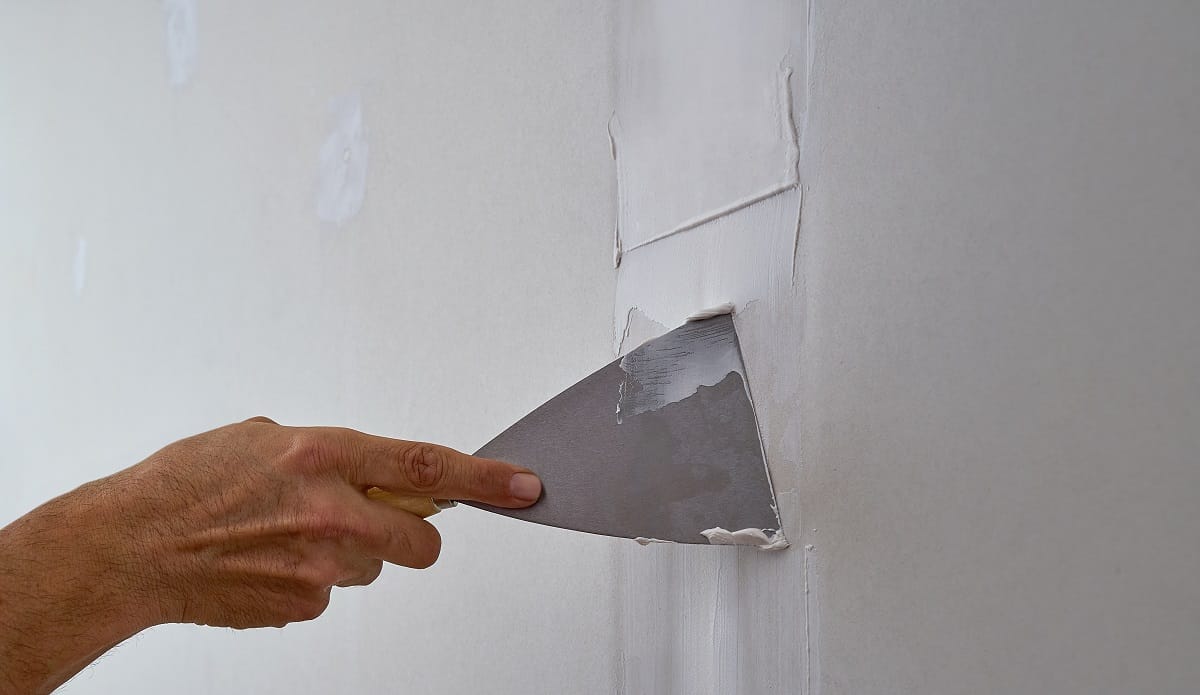Like wood and brick, drywall is a fundamental element of modern construction. Essentially every home across the nation has walls and ceilings made of drywall, which means every homeowner needs to be familiar with drywall maintenance and care.
Unfortunately, like too many other aspects of a home, most homeowners don’t know much about drywall — so when something goes wrong with it, they might not notice or know what to do. Here are some of the most common drywall problems that pop up
What’s Wrong With Your Drywall?
Moldy Drywall
Drywall has “dry” in the name for a reason. When moisture seeps into drywall, all manner of issues arises — not least of which is mold. Wet or soggy drywall makes for a near-perfect environment for mold, which soaks up the moisture trapped in the drywall’s interior while feeding off the paper that encases drywall panels. Plus, because drywall is hung inside the home, the temperature of the environment is typically warm enough to facilitate a mold bloom. Not all mold is toxic — but most of it is, so it’s a good idea to get mold-infested drywall replaced ASAP.

Mold most often grows in the damper areas of your home, like the kitchen and bathrooms, but a poorly ventilated basement is also a typical location for mold growth. Additionally, if water leaks anywhere in your home, mold will likely crop up. Humid and rainy parts of the world are more likely to struggle with mold problems, so if you live somewhere like Seattle or Miami, you might need to keep a drywall repair specialist on speed dial.
What Do You Do?
Mold comes in many colors and textures, from black and slimy to white and fuzzy. It’s safe to say that if you see anything growing on your walls or ceilings, you should clear it out and call an expert to eradicate the growth pronto. To prevent mold from growing, keep windows open, run fans, use a dehumidifier, and generally try to keep your drywall dry.
Stained Drywall
Stains and discolorations of your walls and ceiling are also usually signs of past or ongoing water damage. Because water is rarely pure and clean, it will leave bits of dirt and grime on your walls even after the water has dried or dripped away. Mold and mildew will stain, as well, which is why it’s generally easiest to replace mold-infected drywall.

However, there are other things besides moisture that produce drywall stains. For instance, smoking indoors often turns walls and ceilings yellow, and poorly ventilated fires in the kitchen or fireplace can turn your drywall gray or black. Kids, too, can be wanton with their paints and dyes, splashing them on the walls to create stains.
What Do You Do?
Regardless of the cause of the stain, it is possible to reduce its appearance by treating the stain with bleach and paint. Still, if you don’t address the stain’s cause, the stain is likely to reappear. Keep your rooms well-ventilated by running a fan and opening windows, and tell your kids to be more careful during art time.
Wiggling Drywall
If your house was properly built, you should be able to push on your walls and ceilings without feeling any movement. In some properties, the drywall will give somewhat, but if you can wiggle your walls without much effort, you need to see a drywall specialist. It’s likely that whoever installed your walls skimped on the drywall tape and joint compound, or they might have failed to fasten the drywall to your wall studs with nails. Loose drywall doesn’t do any good, so you should get it fixed before it falls off completely.

What Do You Do?
A professional handy-person is best equipped to solve a wiggly drywall pane. However, you can DIY it by removing the loose portion of drywall and hanging a new one, this time applying the right amount of tape and joint compound or else nailing the drywall into the house’s frame appropriately. Unfortunately, you might find that there isn’t a good anchor point for the drywall, meaning you’ll have to bolster your drywall with a plywood panel or add support to the drywall some other way.
It might be more worthwhile to just avoid pressing on that portion of drywall; if you put a large piece of furniture in front of it, like a bookcase or sofa, no one will be the wiser.
Bubbling Drywall
It’s unlikely that you’ll ever know about air pockets inside your drywall, but bubbles and blisters can form between drywall panels, beneath the drywall tape. This occurs when installers applied too much or not enough joint compound beneath the tape; the tape won’t adhere properly when this happens, causing it to gap and bubble beneath any texture or paint applied on top. Bubbles might also occur as a result of water damage. You might also investigate this, so you can avoid more extensive damage and replace affected drywall fast.

What Do You Do?
Drywall repair services will fix bubbles caused by excess joint compounds by applying a mesh tape on top, which will adhere directly to the drywall and create a smooth finish. However, if the bubbles are forming due to a water leak, all affected panels will need to be replaced.
Cracked Drywall
Over time, cracks form — that’s just the nature of construction. Often, you’ll see small cracks in your ceiling, which form as a result of minute moisture. Cracks can also appear in walls due to the property settling.

What Do You Do?
You can patch drywall cracks relatively easily with some joint compound applied smoothly with a scraping tool. Once the compound sets, you can apply texture and paint to your walls, and no one will know the difference.
However, you should still keep an eye on your cracks; if they reappear and start to widen, something serious could be wrong with your foundation or some other structural element of your home. In that case, you definitely need to call in an expert for an evaluation.
Scuffed Drywall
Scuffs and scrapes are some of the most common types of damage to drywall — which is good, considering they have little bearing on the functionality of the drywall. Most often, scuffs occur when furniture is too close to the wall and rubs against it with us, but shoes, animals, and other things can make unsightly rub marks.

What Do You Do?
A cleaning sponge and some elbow grease is usually all you need to get rid of the scuff. Most homeowners find that scuff marks wipe off easily with a Magic Eraser or a similar product with some micro-abrasive properties. Still, you should avoid cleaning the scuff too vigorously, which could scratch off the paint, or leave water on your walls for a long period, which will do harm to your drywall.
To keep furniture from making scuffmarks on your walls, you should be careful how you handle it. You might want to place rubber tips on your furniture feet, so they don’t slide around as easily and knock your walls. You can also attach corner and surface guards to your walls in high-traffic corridors, so hands and shoes don’t leave scuffs behind.
This is just a handful of the many, many things that can go wrong with your drywall. If you are uncertain that you can fix a drywall issue on your own, you shouldn’t hesitate to call in a pro, who can quickly and efficiently answer your questions and give you a great-looking interior, to boot.
Choosing the Appropriate Drywall Replacement
Drywall issues often necessitate replacement and present an opportunity to select a type of drywall that’s tailored to your specific needs. Several drywall types address the problems discussed earlier, each with unique attributes catering to different situations.
For instance, green boards and cement boards are resistant to moisture, making them ideal for preventing mold development. On the other hand, to prevent staining use impact-resistant drywall, which offers enhanced durability.
Meanwhile, drywall that wiggles or bubbles can indicate structural instability or water damage. In these cases, stronger water-resistant types like Type X drywall will offer increased resistance to both fire and water damage.
Where drywall is cracked or scuffed, upgrading to a more durable type like impact-resistant or fiberglass-faced drywall can help resist these forms of wear and tear.
To reduce noise transmission between rooms use soundproof drywall. This specialized drywall effectively reduces the transmission of sound waves and creates a quieter and more peaceful environment.
Remember, the key is to understand the specific issues you are encountering and choose a type of drywall that addresses those while meeting your broader needs.
Related Articles
11 Best Drywall Patch Kits to Consider Today



